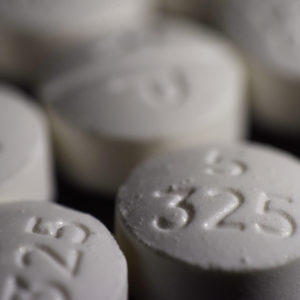In a time when public attention on the police often has been critical, the men and women in blue have been accused of doing too much: of being too militarized, too racist and too violent. If there’s anything that could change the perception that law enforcement officers have moved from protecting and serving to soldiering and bullying, it just might be the opioid epidemic raging across the United States.
Lorain County, Ohio, had 12 drug-related deaths in 2006. By 2016, the number had risen to a staggering 132. In many communities, deaths from drug overdose have become a daily occurrence. Police officers are on the front line in this war, forced to become de facto social workers as this epidemic sweeps the heartland.
In some cities, the crisis already has changed the face of policing. Unlike the crack epidemic of the 1980s or methamphetamine in the early 2000s, there is no one dominant demographic on which police must focus attention, such as street gangs or rural America. People are using in their private homes: grandparents, moms, dads, the poor and the rich all use. Often, there are no obvious signs of addiction until it’s too late, when the police are called to help or the examiner is called to remove the body.
Indeed, the burden the opioid epidemic has put on police departments is unprecedented. Local forces are having to divert time and money to combat the consequences that accompany addiction, including violence, petty crimes and child neglect. With rising overdose rates, police often are the first responders to witness and intervene. In fact, it’s not unusual for medical responders to wait for police to arrive before entering an area they deem unsafe — the drug trade is dangerous and medical responders know it. Indeed, it’s because police officers often are first on the scene that they should be the ones carrying Narcan, a brand name for the drug naloxone, which can reverse opioid overdoses.
In recent days, the increased burden from overdoses has prompted some police departments to take drastic action. Some have issued notices to the communities they serve that they will not carry Narcan, be available to respond to an overdose or that they will adopt a three-strikes policy with regard to repeated overdoses. Those who advocate these measures believe they will help officers do their jobs more efficiently or, as one Ohio sheriff hopes, deter opioid abuse and help people become more self-reliant.
Unfortunately, addiction is not a disease that easily allows people to take a rational approach to their actions. The threats of death and disease through addiction are nothing new to any of us. What is new is the deadlier forms of opioids that are driving the drastic increases in fatal overdoses.
It is immoral for society as a whole to withhold proven ways to combat these threats. When administered by people who aren’t medically trained, Narcan was able to reverse 26,000 opioid overdoses between 1996 and 2014. In one Massachusetts town, Narcan delivered by police officers saved 418 lives in just five years. While Narcan is not a final solution to the opioid epidemic, these numbers show it is imperative that it remain in the hands of first responders as a tool to save lives.
Of course, treatment is the gold standard to address drug addiction and, when successful, it is the best approach. However, there are many other ways to address the needs of people who use drugs that will ensure their safety and provide resources that enable them to seek treatment in the long term. Harm reduction programs — such as syringe-access programs or naloxone distribution — have been proven to work to protect people who use drugs from the deadly consequences of drug use, by preventing fatal overdoses and cutting down on infectious diseases in areas where injection drug use is prevalent.
There is evidence that the presence of harm reduction programs correlates well with increased entry into drug-treatment programs. These programs can be accessed within community organizations that focus on needle exchange or naloxone distribution; at pharmacies and clinics that sell clean needles and naloxone; or by contact with first responders who are in a unique position to save the most lives. It is essential that these sorts of programs remain available in our communities.
The police mission has changed, just as it will always change. Yesterday, it was walking a beat with a revolver and club to make sure kids went to school. Today, we see police departments plan anti-terrorism contingencies. Tomorrow, in addition to patrolling for bad guys, police also will respond to sick people. The people who overdose are citizens of the community, deserving of protection and service from the police. Forsaking them will not reduce drug use. It will simply cost more lives.

